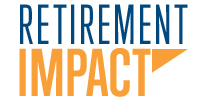As 2023 continues to unfold, shifts in the 401k landscape are redefining how we plan for retirement. Today, we delve into the top 4 trends that are shaping fiduciary governance for 401k Trends in 2023: Retirement Income Solutions, SECURE Act 2.0 updates, Fallout from the Supreme Court ruling in Hughes v. Northwestern, and the rising importance of data privacy.
1. Retirement Income Solutions:
Guaranteed income solutions are gaining traction as participants seek the comfort of predictable payouts in their golden years. Employers are increasingly integrating these solutions into their 401k plans, leveraging innovative annuity products and bond ladders. The trend recognizes that a secure retirement isn’t just about accumulating wealth; it’s about ensuring that wealth translates into a stable income. However, with the rise of such solutions, plan fiduciaries must consider the added complexity and work to ensure these options are in the best interest of the participants.
2. Secure Act 2.0 Updates:
The Secure Act 2.0 was signed into law in December 2022 and includes several updates that plan sponsors should be aware of. One of the most significant updates is the increase in the age for required minimum distributions (RMDs) from 72 to 73 starting on January 1, 2023, and then further to 75 starting on January 1, 2033. It is important to note that recordkeepers must make changs to their systems to accommodate these new regulations.
3. Active Funds: Are They Worth the Premium?
Despite the trend towards low-cost passive funds, active funds maintain a substantial presence in 401k plans. These funds, characterized by hands-on management and potentially higher returns, often come with higher fees. As fiduciaries, it’s essential to scrutinize these options thoroughly. Are the potential returns justifying the cost? Regularly benchmarking fund performance and fees is crucial to ensure participants are receiving value for the fees they are paying. It is also important to note that all investments must be appropriate for the plan’s participants, as determined by the recent Northwestern Supreme Court case.
4. Data Sharing and Participant Privacy:
As digital transformations permeate the financial sector, participant data privacy is paramount. Increased data sharing between plan administrators, payroll providers, and third-party service providers can enhance the participant experience. But it also necessitates robust safeguards to protect sensitive information. Fiduciaries must ensure data privacy policies are in place and enforced. In 2023, striking a balance between personalized services and data security is a challenge that every plan sponsor needs to meet.
In conclusion, 2023 is proving to be a dynamic year for 401k plans. These 401k trends in 2023 underscore the need for fiduciaries to stay informed and adaptable, continually working to ensure plans meet the evolving needs of their participants while protecting their interests. Staying ahead of these developments is key to providing a retirement plan that is not just compliant, but also helps provide better outcomes for your employees.


